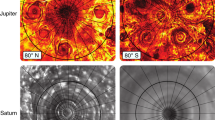Summary
¶Two cyclonic vortices close to each other, a ‘binary cyclone’ or ‘binary system’, tend to rotate cyclonically relative to one another and to merge, i.e. the “Fujiwhara effect”. The point vortex model that represents barotropic binary cyclones predicts their rotation features as follows. The rotation rate is proportional linearly to the sum of the cyclones’ intensities and inversely to the square of their separation distance while the more intense cyclone rotates slower. Our earlier observational analysis of 1423 mid-latitude binary cyclones (Ziv and Alpert, 1995) showed a reasonable fit to theory, except for the absence of a correlation between individual speeds and intensities within the binary systems, and a reversal of the inverse rotation-separation relationship at the range of 1400–1800 km.
This study is the first attempt to describe the mid-latitude binary systems using potential vorticity concepts (PV thinking), which implies that a binary interaction takes place between the 3-D flow patterns induced by upper-PV or surface-thermal anomalies rather than by the surface cyclones alone. It is argued that the upper-anomalies dominate the rotation process, and hence the rotational speeds of the interacting surface cyclones are more closely correlated with the relative intensities of their corresponding upper-level anomalies rather than with their own intensities, as reflected in weather charts. Data analysis indicates that mid-latitude binary cyclones are normally associated with at least one upper-PV anomaly. This explains the absence of a correlation between the rotation speed and the intensity of the surface cyclones there.
A unique type of a mid-latitude binary system is identified, in which one cyclone coincides with an upper major PV-anomaly and the other moves along the periphery of the former. Such a binary system is entitled here the ‘Contact Binary System’ (CBS), in contrast with remote interacting systems implied by the point vortex theory.
Analytical considerations yield an increase in the rotation rate with separation for CBSs of separation smaller than ∼1000–1500 km, in contrast to the normal decrease with R 2. The contribution of CBSs is suggested here to explain the abnormal increase in rotation rate at 1400–1900 km range.
Similar content being viewed by others
Author information
Authors and Affiliations
Rights and permissions
About this article
Cite this article
Ziv, B., Alpert, P. Rotation of mid-latitude binary cyclones: a potential vorticity approach. Theor Appl Climatol 76, 189–202 (2003). https://doi.org/10.1007/s00704-003-0011-x
Received:
Revised:
Accepted:
Published:
Issue Date:
DOI: https://doi.org/10.1007/s00704-003-0011-x




